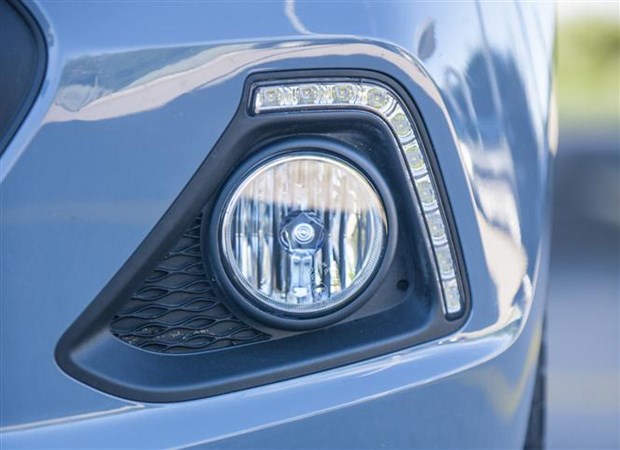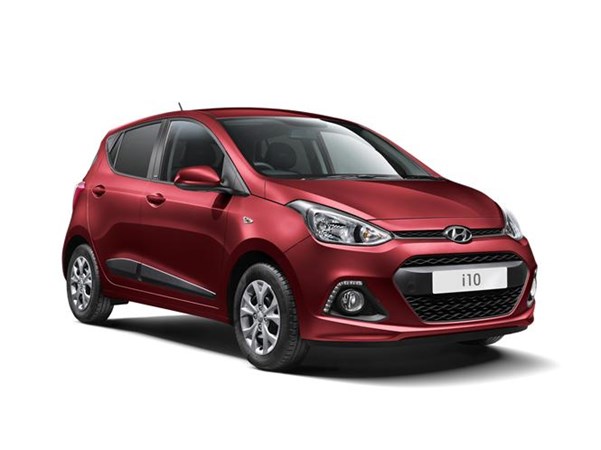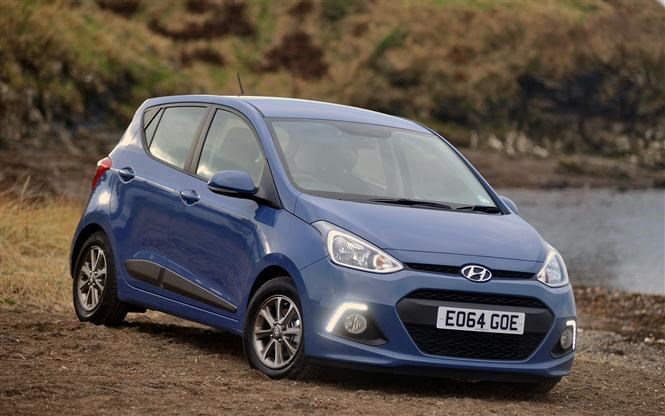The Hyundai i10 has been a genuine competitor in the city car sector since the original launched back in 2008, with the firm injecting a more premium feel with this latest generation to increase desirability.
As well as feeling capable in urban environments, the i10 is one of few city cars that will perform comfortably out on country lanes as well as on the motorway.
Being larger and more practical than before, the latest i10 can be had with a choice of seven trim levels, six colours, two petrol engines and a choice of manual or automatic transmissions.
If you’re looking for an accomplished city car in the form of an i10, it shouldn’t be difficult to find the one for you.
What’s the best engine?
Propulsion comes from two petrol engines; a 1-litre three-cylinder, and a 1.2-litre four-cylinder. There’s no diesel engine but given the car’s driving characteristics, light weight and class-leading aerodynamics, the i10 will be cheap to run and fun to drive irrespective of this.
If you are aiming for maximum efficiency however, the 1-litre BlueDrive engine available in SE trim will increase the average fuel consumption figure from 60.1mpg to 65.7mpg. CO2 emissions also drop to 98g/km, from 108g/km.
.jpg)
Considering the i10 hasn’t been built to offer exhilarating performance, the 1-litre, three-cylinder unit is our pick of the range. The top speed of 96mph and 0-62mph time of 14.9 seconds may not look encouraging, but in reality the i10 can still make decent progress.
A smooth five-speed gearbox helps here, but those who require an automatic will have to look at the 1.2-litre engine.
The 1.2-litre four-cylinder engine does provide the i10 with slightly better performance but we don’t think it’s worth the outlay and running costs. Average fuel consumption compares at 45.6mpg, with CO2 emissions at 114g/km. It’s noisier than the 1-litre too.
Automatic or manual transmission?
If you do require an i10 to change gears for you, a four-speed automatic gearbox is only available on the higher-powered 1.2-litre petrol engine with 86bhp. Considering the extra £1,150 premium over the manual version we wouldn’t recommend this option unless you have to, as CO2 emissions jump up to 139g/km.
Which trim?
Standard equipment is generous on all models of the i10, with seven trim levels to choose from: S, S Air, SE, SE Blue, Premium, Premium SE and a special Go Edition.
There are six colours to paint your Hyundai 10 with, including Polar White and Morning Blue as no-cost options. The special edition Go model is the only i10 available in red.
Inside, S and S Air models come with a beige interior colour scheme extending to the seats, dash and door trims, while SE models and above have a choice of blue and orange colour schemes depending on the selected exterior colour. The special edition Go model comes with a grey interior.

Basic S models come with electric front windows, central locking, a USB socket, ISOFIX child seat mounts and 14-inch steel wheels.
The mid-range SE spec will meet the needs of many – the cheapest variant is available for £10,075 with our preferred 1-litre petrol engine.
The extras over an S model include:
- Cruise control (manual gearbox variants only)
- Air-con
- Height-adjustable driver’s seat
- Remote central locking
- Electric rear windows
- Space-saver spare wheel
If you want Bluetooth connectivity, alloy wheels, steering wheel mounted controls and front foglights then the Premium model will fit the bill for £700 more.

Bearing in mind the Go special edition adds all the above – bar alloy wheels – and yet costs less than an SE model at £9,545 – we’d say selecting this model is a no-brainer.
Which options should you go for?
If you manage to secure a Go special edition model, the only options available will be a choice of service plans spread between three and five years.
If you decide to go for the SE model instead, the only options available are metallic paint and the Connectivity Pack. This brings Bluetooth, steering wheel-mounted audio controls and two rear speakers.
Verdict
Our Hyundai i10 of choice would be a 1-litre 65bhp Go special edition. Based on the SE model, this offers extra toys for £530 less.

If we had £550 spare, we’d be tempted by metallic paint – especially by the pearlescent ‘Red Passion’ finish.
For the full Hyundai i10 review, click here.
Are you still not sure which car you should choose? Perhaps these could point you in the right direction:
Which Kia Picanto should you buy?
Five family-friendly cars on a budget
Which Toyota Aygo should you buy?





.jpg)
.jpg)
.jpg)
.jpg)

.jpg?quality=50)
.jpg?quality=50)
.jpg?quality=50)
.jpg?quality=50)